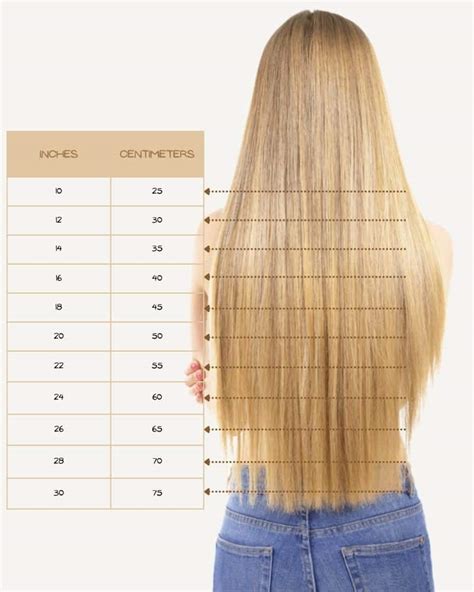The Ultimate Guide to Transform Your Locks
Dreaming of flowing, waist-length hair? Look no further than long long hair extensions. With the right approach, you can achieve this coveted look without damaging your natural strands. Here’s everything you need to know about long long hair extensions:

Types of Extensions
- Tape-In Extensions: Thin, adhesive tapes that are applied to the root of your hair.
- Micro-Beaded Extensions: Tiny beads that are clamped around the hair to attach extensions.
- Clip-In Extensions: Temporary clip-on extensions that can be easily removed and reapplied.
- Bonded Extensions: Extensions that are glued to the natural hair using keratin or heat.
Extension Lengths
Extensions are typically available in lengths ranging from 12 to 36 inches. The length you choose will depend on your natural hair length and desired look.
Hair Quality
- Remy Hair: Hair that has been collected from a single donor and retains its natural cuticle. It is considered the highest quality and most durable.
- Synthetic Hair: Man-made hair that can withstand heat styling and chemicals. However, it is not as natural-looking as Remy hair.
Color Match
For a seamless look, it’s essential to match the color of the extensions to your natural hair. Professional colorists can help you determine the best match.
Maintenance
- Brushing: Use a wide-toothed brush to remove tangles from the extensions.
- Washing: Wash and condition your hair regularly, avoiding the adhesive areas for tape-in extensions.
- Styling: Use heat protectants when styling extensions and avoid excessive heat exposure.
- Trimming: Trim any split ends on the extensions to maintain their healthy appearance.
Techniques
5 Tips and Tricks for Long Long Hair Extensions
- Maximize Length: Use layered extensions to add volume and create a more natural-looking blend.
- Limit Adhesive: Avoid using too much adhesive for tape-in extensions as it can damage your natural hair.
- Protect Roots: Use a silk scarf or hairnet to protect the roots from heat damage during styling.
- Use Extensions for Volume: Add fullness to thin hair by using shorter extensions for the top layers.
- Transition Gradually: Start with shorter extensions and gradually increase the length as your natural hair grows.
3 Common Mistakes to Avoid
- Over-Styling: Excessive heat styling and harsh chemicals can weaken the extensions and damage your natural hair.
- Sleeping with Wet Hair: Avoid sleeping with wet hair as it can cause tangles and damage the extensions.
- Ignoring Maintenance: Neglecting proper maintenance can lead to hair breakage, tangles, and a shorter lifespan for the extensions.
Step-by-Step Approach to Applying Extensions
Tape-In Extensions:
Micro-Beaded Extensions:
1. Separate a thin section of hair.
2. Place the bead on the hair strand.
3. Insert the extension into the bead and clamp it shut.
Clip-In Extensions:
1. Clip the extensions onto the root of your hair.
2. Adjust the clips to ensure a secure hold.
Bonded Extensions:
1. Apply keratin glue to the root of your hair.
2. Place the extension on top of the glue and heat it to seal the bond.
Table 1: Extension Types and Their Characteristics
| Type | Method | Pros | Cons |
|---|---|---|---|
| Tape-In | Adhesive tapes | Easy to apply | Can damage hair if not applied correctly |
| Micro-Beaded | Beads | Long-lasting | Can cause hair breakage if beads are clamped too tightly |
| Clip-In | Clips | Temporary | Can slip out if not secured properly |
| Bonded | Keratin glue | Strong hold | Can be difficult to remove |
Table 2: Hair Quality and Its Impact
| Quality | Appearance | Durability | Price |
|---|---|---|---|
| Remy Hair | Natural-looking | Durable | Expensive |
| Synthetic Hair | Less natural-looking | Less durable | Affordable |
Table 3: Extension Length and Cost Considerations
| Length (inches) | Cost |
|---|---|
| 12-16 | $200-$400 |
| 18-22 | $300-$500 |
| 24-28 | $400-$600 |
| 30-36 | $500-$700 |
Table 4: Maintenance Schedule for Extensions
| Frequency | Task |
|---|---|
| Daily | Brush extensions to remove tangles |
| Weekly | Wash and condition extensions |
| Monthly | Trim split ends |
| Annually | Have extensions professionally removed and reapplied |
By following these tips and techniques, you can safely and effectively achieve long long hair extensions that will transform your look. Remember, proper maintenance is key to ensuring the health and longevity of your extensions.
